
Despite the dry and scrubby look, there is plenty of life in Chobe.
I was here in this same area seven years ago, and it looked quite different. I remember it to be much greener and there were small lakes and water in the river bed. I asked our camp manager Jess about that. She said the water dried up in 2015 and there had been no water in the river bed since then. To keep the animals in the area, water holes had been dug with pumps powered by solar. We saw a lot of solar power usage in all the camps.
We saw plenty of wildlife on our first full day of game drives in Sevuti.

At first light we passed a hyena den. Two of the ten pups were out of the den and we watched them for a little bit. We also saw impala and a few water buffalo in the morning.
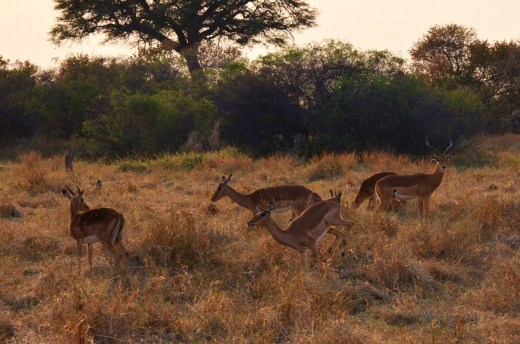
Early in the drive we followed two lionesses as they climbed a rocky outcrop and took up a Lion King perch to watch the surrounding area. These two lionesses were not from any of the local prides.




What we didn’t see, and what I remember from before, were trees filled with baboons and vervet monkeys. I asked Bonnie about the absence of the monkeys, and he said they left when the water dried up. All but one hippo left as well. We felt sad for the one hippo who stayed behind. He lives all alone in a very small pond, and peeked at us with just his eyeballs out of the water when we stopped to visit him at his pond.
We ended the morning drive with a pride of lions, doing what they do most of the hours of the day, sleeping. One lioness had a wound on her right side, and one cub had a blind eye. Bonnie explained how the cub had been stung by bees in a cave when quite young. The other cub had died from the bee stings.


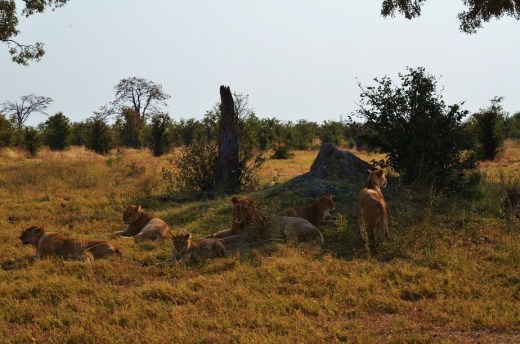

Cat’s Claw:
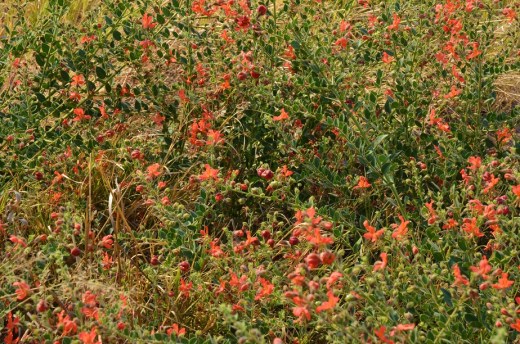
Back in camp we sat in the main area for brunch. The days start quite cool, but quickly heat up. The temperatures swing from the mid 40s F to nearly 90 F. The tent was too hot for a midday nap, but the outdoor shower was pleasant.
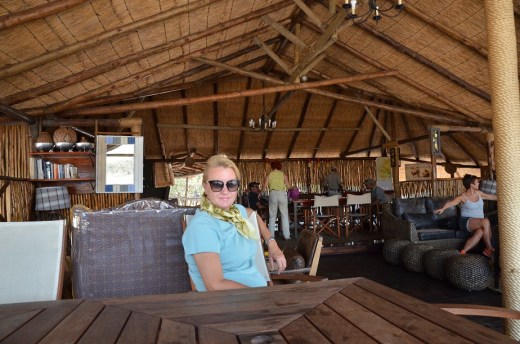


A snack at 3 pm gets you ready for a 3:30 afternoon drive.
On this drive we were accompanied by a couple from Belgium. It was quite a pleasant drive as we followed the dry river bed, passing a steenbok, one of my favorite birds, the lilac breasted roller, and a large make kudu.


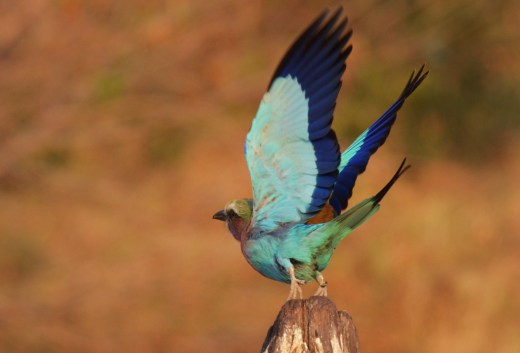

On the plains we saw wildebeest, the national bird the kori bustard and a black backed jackal.
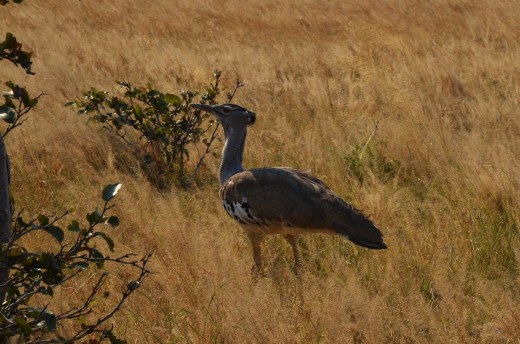
We got lucky with two less than common giraffe sightings. One giraffe was drinking, but as soon as he saw us, he righted himself from his ungainly drinking position. As we continued we saw many more giraffe and two bulls fighting. The fighting is called “necking”, and can last either a short five minutes, or for much longer. We watched these two males go at it for a while, then drove off as their dispute continued.





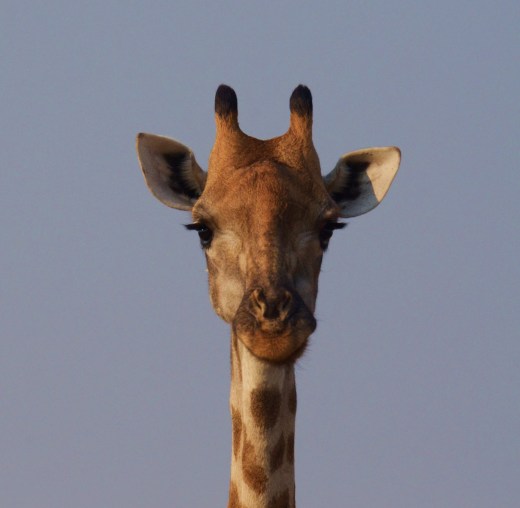
There is a water hole frequented most evenings by elephants, and it was near this hole that we had our sundowners. We encountered a few bull elephants in the grassy plains on the way to the water hole, and then watched the family herd as they took their turn.



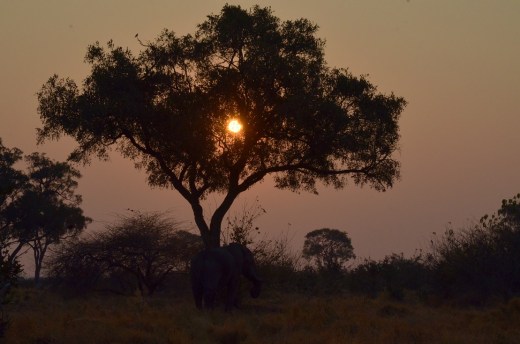

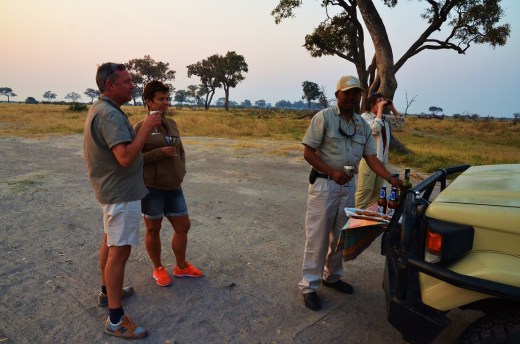


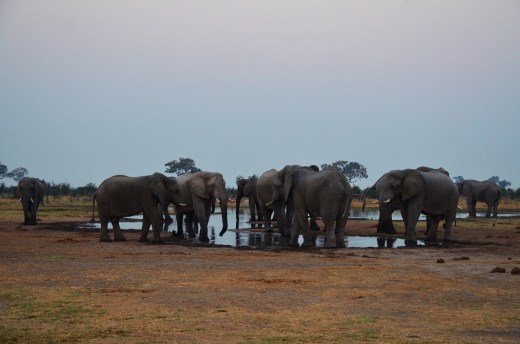
It was a fast paced drive back to the main gate of the park to be exiting by 6:30 PM, but we made it. The sand is quite deep on many of the driving tracks and four wheel drive is a must.
The dinners at Sevuti Camp are announced with an acappella song sung by Jess and the waiters. The food was very good, all vegetables were fresh and tasty.
Every night we slept in Kadizora Camp we heard hippos. All night at Sevuti night, every night, we heard lions. At times they sounded so close as to be in camp.
Good thing the camps are pumping water for the wildlife.
Sad about the water disappearing. I want to go to Botswana in the next couple of years. I hope the trend doesn’t continue in other areas. Lovely photos.
Thank you Marie. They told me that the few years the river bed had water and the marshes had ponds were rare. I happened to be there in 2011 when they had a few wet years. Botswana is very smart about tourism. They outlawed all trophy hunting 15 years ago and know that it is the wildlife that brings in the tourism. They have an anti poaching stance of “shoot to kill on sight” and we saw anti poaching teams near Kasane. They will keep the water holes full of water as long as possible, I don’t see that going away. The lodges and camps depend on the wildlife to bring in tourism and Botswana depends on tourism.
Thanks for the info. I guess I should get there soon.
Good Blog with fantastic pics!
We felt like we were right there with
You